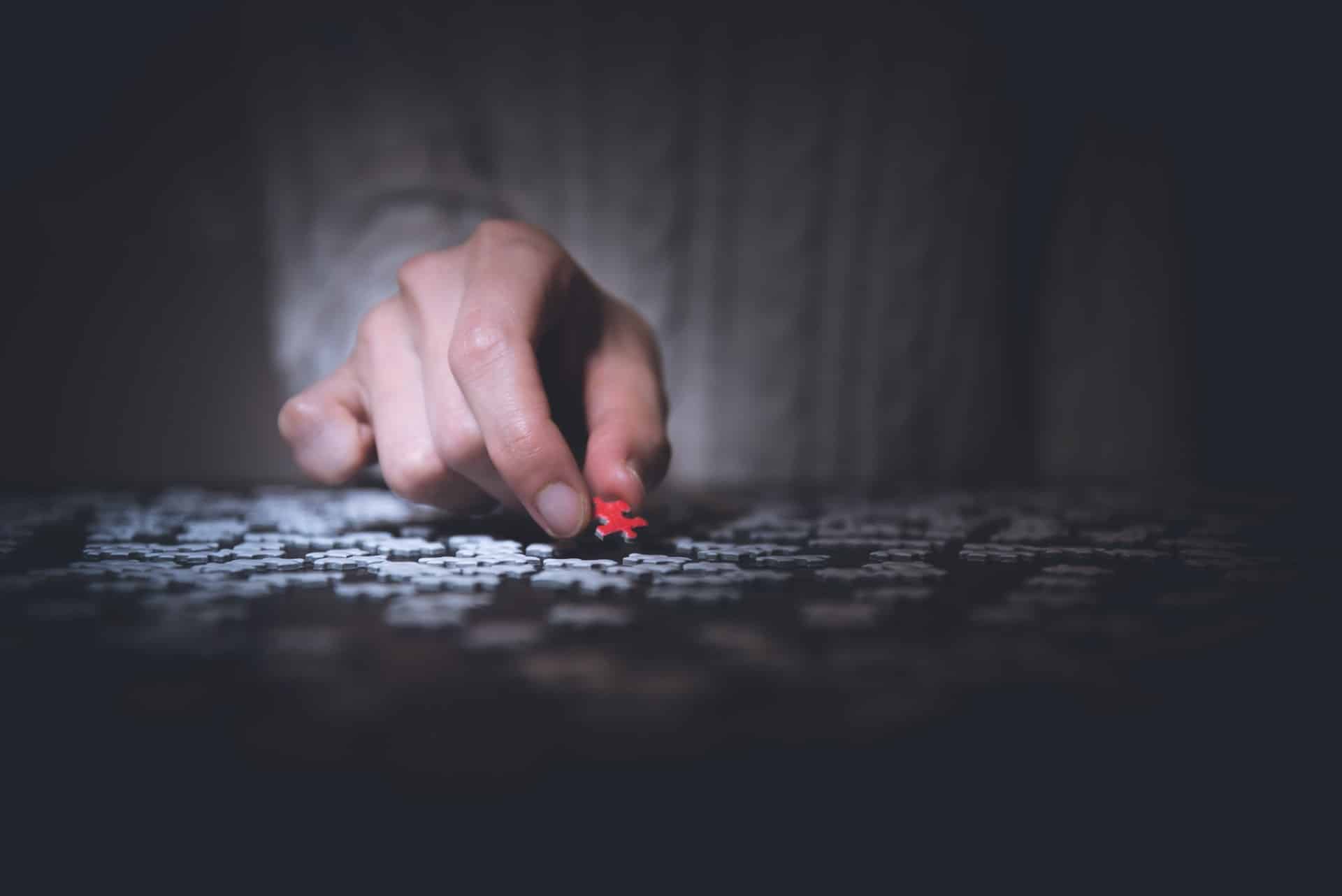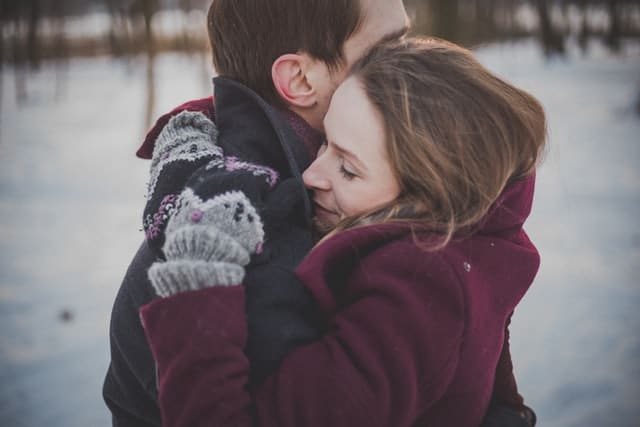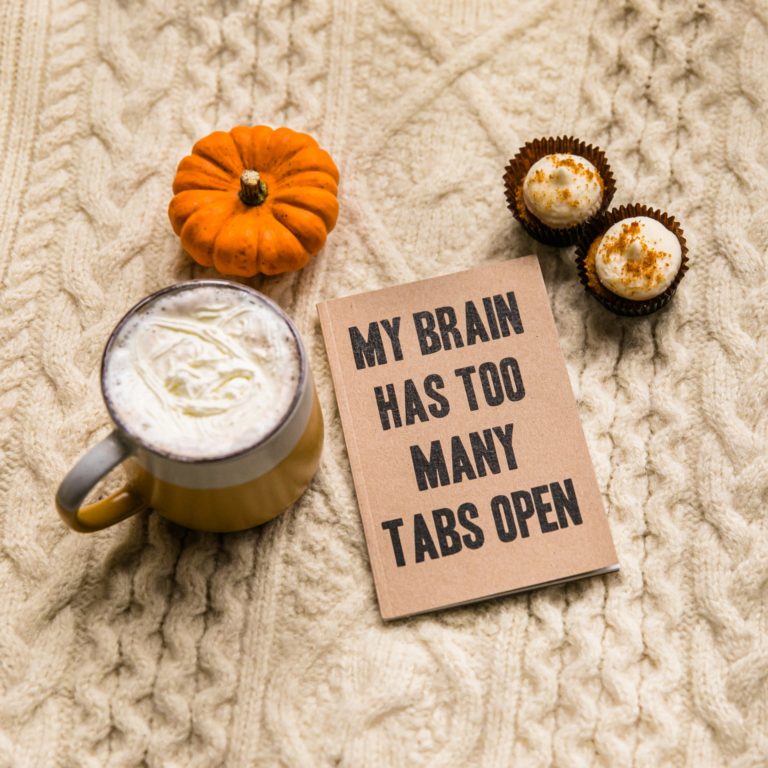A Guide To Anxiety: Introduction

In this guide to anxiety, we first ask you to look at these questions:
You can’t really talk about anxiety without at least a brief discussion of why.
Why does this happen?
Why me?
Why can’t I make it stop?
Why can’t people understand that it’s not my fault?
A Guide To Anxiety: The Facts

Anxiety is one of the most misunderstood issues that exists. Anxiety Disorders affect 18.1 % of adults in the United States (approximately 40 million adults between the ages of 18 to 54) – National Institute of Mental Health (NIMH).
Although anxiety is very treatable, only 36% of those with anxiety seek treatment.
However, people with anxiety are 3-5 times more likely to seek medical treatment and 6 times more likely to be hospitalized for psychiatric illness than those who do not have anxiety.
Nearly one half of people diagnosed with depression are also treated for anxiety, according to the Anxiety and Depression Association of America (ADAA).
Anxiety is the body’s reaction to stress that triggers our fight, flight, or freeze response. When there’s immediate danger, the body marshals that energy to address the present situation.
When there is no actual danger, or the situation is resolved, if the anxiety persists, it becomes counterproductive and may create emotional and physiological challenges.
Harvard Health states: “Evidence suggests that people with anxiety disorders are at greater risk for developing a number of chronic medical conditions. They may also have more severe symptoms and a greater risk of death when they become ill.”
Some of the common medical problems that may be related to anxiety include:
- Respiratory Conditions, such as asthma and COPD
- Gastrointestinal Conditions, such as IBS and ulcers
- Heart Disease
- Substance abuse and addiction
- Migraines
We will talk about some of the complexities of anxiety, then focus on what to do about it.
“Anxiety is a reaction to stress that has both psychological and physical features. The feeling is thought to arise in the amygdala, a brain region that governs many intense emotional responses.
As neurotransmitters carry the impulse to the sympathetic nervous system, heart and breathing rates increase, muscles tense, and blood flow is diverted from the abdominal organs to the brain. In the short term, anxiety prepares us to confront a crisis by putting the body on alert.
But its physical effects can be counterproductive, causing light-headedness, nausea, diarrhea, and frequent urination. And when it persists, anxiety can take a toll on our mental and physical health.” (Harvard Health Publishing) 2008
The process described above certainly sounds like a physiological response in the brain (which most would agree is part of the body!) that creates both physical and psychological reactions. When the body is flooded with stress hormones, like adrenaline and cortisol, all systems become alert and ready to act – or stop you dead in your tracks.
A Guide To Anxiety: Why Me?

For most people, stress hormones return to their pre-stress levels between 20 minutes – two hours after the issue is resolved. The symptoms of anxiety resolve as the hormones subside unless a person has an anxiety disorder.
In those cases, the return to previous levels is still outside the normal limits, so symptoms are present most of the time.
As we learn more about the mind/body connection, mental health and brain-based disorders like anxiety begin to make more sense. We have a long way to go before the researchers can agree on what this means, but there is evidence to suggest that there is a genetic component.
Here’s the tricky part – the genes may be turned on by an environmental trigger or triggers. We are back to the nature and nurture argument. Some believe that trauma, child abuse and neglect, poverty, and other life experiences may ‘turn on’ these genes.
In reality, it’s not either/or but both/and. So, yes, mental health is physical health – the brain is part of the body. Our bodies can be affected by all kinds of environmental factors – food, pet dander, pollen, heavy metals, brain injury, trauma, and so on, which affect the brain.
Some researchers believe that people can be born with a central nervous system that simply processes things differently, and that those people reach a level of saturation more quickly. And of course, our childhood experiences from (and including) birth affect our ability to cope with and process information and emotional experiences.
It’s complicated.
A Guide To Anxiety: Case Study: Susan

A 30-Something with Everything
At age 35, Susan was a lifelong athlete, confident wife, and mother. She had everything anyone could want and lived a comfortable, safe existence.
Physical: Susan began having muscle weakness in her legs that progressively worsened over several months. After multiple tests, x-rays, an MRI, specialists, and appointments, she was diagnosed with a progressive neurological disease.
Environmental: Susan soon found it necessary to use a wheelchair for safety reasons. Her one stipulation was that she use a manual chair to maintain her upper body strength. While she was able to move around in parts of the house, the bathrooms were inaccessible and getting upstairs required transferring to a chair lift.
Cognitive/Emotional: Soon the confident young woman struggled daily with doubt and worry. She worried that she would turn over in her chair and be unable to get up. The more she thought about this, the greater her fear.
Within a few months, she was so anxious that she would no longer leave the house – even to sit on the deck when her husband or daughter were there with her.
Interpersonal/Social: Anxiety robbed Susan of her peace of mind, confidence and relationships. She no longer saw her friends for lunch or played cards with neighbors. As her world became smaller, her reliance on her family increased. That dependence created more anxiety for Susan and tension in her marriage.
Soon, her husband was drinking excessively and showing other signs of stress, including verbal aggression. Their daughter could think of nothing but what would happen to her mom when she left for college, and she also began to have anxiety.
Treatment: Susan’s treatment was complex. It consisted of medication, cognitive behavioral therapy, marriage and family therapy and behavior modification strategies.
By taking small, safe steps to move out of her comfort zone physically, she eventually began going out again.
When her fear of turning over in her chair actually happened, she got help and learned what to do if she needed assistance. That fear lost its control over her in that moment.
The medication was a critical component, especially in the beginning when making behavioral changes. Addressing self-sabotaging thoughts helped keep anxiety from increasing when it occurred and prevented anxious thoughts.
It was a long process, but she is fine now.
In the next section of this guide to anxiety, we will illustrate some case studies and dive into how things can be broken down.
A Guide To Anxiety: Case Study: Tommy

A Young Child Who Can’t Be Away from Mom
By age 3 when Tommy was ready to start preschool, he had already been referred to a mental health provider who specialized in early childhood development and play therapy.
Tommy had been a very clingy baby who became inconsolable when his mom left him, even as an infant. Naps and bedtime were so difficult that his mom had to sleep with him.
He seemed to lack the ability to soothe himself, and only felt safe with his mom in sight.
Environmental: Tommy’s parents were very worried for him and afraid they had done something to cause his problems. By all accounts, they were good parents and had a stable history with no abuse. Reportedly, he had simply been very anxious since birth, though he was otherwise healthy.
Birth and Delivery: Tommy was the first and only child. His mom was ill during the last months of her pregnancy. She experienced episodes of high blood pressure and hypoglycemia. She spent most of the last month in bed and worried a lot about the health of her baby.
Tommy was five days late, so labor was induced, and birth was by C-section. Mom required a lot of bed rest and experienced postpartum depression. During the first few weeks, her mother was there to help with the baby.
Physical: Tommy hit all the developmental markers on time – walking, talking, feeding, and playing. His coordination was good, he played well with other kids, and responded well to instruction and limits – as long as his mom was visible.
Cognitive/Emotional: The specialists who worked with Tommy believed that his vocabulary was age appropriate. He was able to verbalize thoughts and feelings, although he demonstrated regressive behavior when his mom had to leave him. He began sucking his thumb, speaking in baby-talk, and often wet his pants.
Family: Tommy’s family was very close and had limited interaction with other people. They tried to keep their family business private and discussed these challenges with nobody. There was concern that their reports to the therapist and other providers may not be totally accurate. Home visits were included in the treatment plan.
Treatment: After several sessions and three home visits, the therapist began to see that Tommy was reacting to his mom’s anxiety. He seemed to know that she was afraid of ‘losing’ him, which reinforced his own fear and anxiety.
Part of the treatment included therapy for mom to understand her role in the issue, behavioral changes that included time away from Tommy while they both learned to soothe themselves, challenging her beliefs that had resulted in faulty thinking and anxiety, and expanding their social support network.
A Guide To Anxiety: Case Study: Marion and Frances

A Couple Living with Chronic Stress
Him: Marion is known to be ‘very laid back’ by his friends and described as passive by his wife. He has a hard time getting around to doing things, and often leaves things incomplete. Nobody would think of Marion as anxious – depressed maybe – but not anxious.
Her: Frances is known to be more assertive and can become aggressive at times. She is an action-oriented person, with difficulty just ‘being’.
Frances has always been described as hyperactive, but at midlife most of that activity takes place in her mind, not her body. She also has trouble completing things, but springs to action when there is a crisis or deadline.
Environmental: Marion and his wife lost all their worldly belongings in a house fire. The long, tedious hurdles with insurance adjusters, contractors, and mortgage companies have been a chronic stressor for over a year.
Her: Frances experiences sleep problems, weight gain, difficulty concentrating, and feeling powerless in a chaotic life where there seems to be no way out. Her stress has resulted in common ‘fight’ anxiety symptoms.
Him: Marion was initially energized by the prospect of building a new home – his dream home. However, over the months of delays and obstacles, he seemed to get comfortable in their rental home and lost momentum. When the wheels finally began turning again, his big task was to get the permits to begin building. He didn’t.
Frances tried to do it – she couldn’t.
Interpersonal/Social: She begged and nagged but Marion did nothing but promise to do it this week. When it was time for the contractors to arrive, there was no permit. Even worse, it could take six weeks and several thousand dollars. Why? Frances was livid and could not understand this behavior.
Marion turned to friends for support and Frances isolated and worked more.
Nature and Nurture: Marion and Frances have very different styles of coping – neither very effective. Their body chemistries are different, with different genetic qualities and very different backgrounds. Stress affects them differently.
Him: In addition to the more common fight and flight reaction to stress, the less common response is freeze. Think of a deer-in-the-headlights response. Marion’s response is commonly referred to as being paralyzed by anxiety/fear/doubt.
He is overwhelmed by the flooding of hormones that kick Frances into high gear and spur her into action.
Her: Frances is a fighter by nature and the added adrenaline fuels her need to act. If she becomes overwhelmed, she may spin in circles for a while, but she doesn’t stop – even to sleep. Her anxiety makes sense in their situation – do something!
Treatment: Marion responded to brief, safe behavioral changes. He reacted with avoidance when he felt pressured. He refused medication as an option. Cognitive therapy was ineffective with Marion, as he has deeply held defenses.
Family therapy was helpful to open lines of communication and address the differences in how they respond to and cope with stress.
Frances responded well to medication and had some success with behavioral interventions to prevent her from feeling so powerless.
A Guide To Anxiety: What Can I Do?

If anxiety is negatively affecting your life, it’s important to act. This guide to anxiety will lay out some ideas of what you can do on your own, but don’t be afraid to ask for help if that isn’t enough.
Try These Tips
Use these strategies to help resolve anxious thoughts, feelings, and behaviors:
- Mind your health. Give your body what it craves: get enough sleep, exercise, and eat nutritiously.
- Gather your family history. Ask about your family history, if you don’t know. Do any of your immediate relatives have anxiety? Anxiety is often referred to as ‘nerves’ or a ‘nervous breakdown.’
- Substance abuse may also be a red flag for anxiety. Check for substance abuse or addiction in relatives.
- Knowledge is power – anxiety runs in families.
- Things like these are often secrets, so be aware.
- Look at your environment. Are you responding to the anxiety of others? Do you have stressors in your life that trigger your anxiety? Even good things can be stressful, such as vacations, pets, children, work, and so on. Figure out what may be triggering your anxiety and find ways to lessen the stress.
- Here’s a hint: If your schedule is booked solid every hour of every day for weeks in advance, you may need to prioritize, delegate, and let go of some things.
- Schedule plenty of time between events, so rushing around and running late doesn’t fuel the stress even more.
- Find time to do nothing.
- We have some control over much of this stress, though it may not seem like it. Take an honest look at what may be possible to turn over to someone else. This may require exploring your need to be in control, perfectionism, and doing things yourself to micromanage the outcome.
- Assess your interpersonal and social relationships:
- Are your interactions with your family, friends, and coworkers healthy?
- Do you find yourself avoiding or dreading contact with your spouse or your boss? Why?
- Who do you talk to when you need to vent or just have a break from your day? Where do you go to relax? If you don’t have these outlets, get some.
- Attend a support group. Learning from others who have similar challenges is a great way to strengthen coping skills, build confidence, and develop relationships.
- If the thought of going to a support group creates more anxiety, you may want to wait. Social anxiety will escalate at the thought of this, so do what works for you. Revisit this strategy after you have learned some skills or feel less anxious.
- If the thought of going to a support group creates more anxiety, you may want to wait. Social anxiety will escalate at the thought of this, so do what works for you. Revisit this strategy after you have learned some skills or feel less anxious.
- Avoid substance abuse. There’s a difference in responsible, social drinking and abusing alcohol or other drugs. People everywhere, especially those with anxiety, use alcohol and other drugs as a ‘social lubricant’. It takes the edge off and makes it easier to interact with others and/or be in crowded places.
- Be very careful that you don’t self-medicate with alcohol. Talk to a medical provider about this if your anxiety rises to the level that alcohol is necessary for you to interact socially.
- Consider medication – but it’s critical to avoid mixing alcohol and anti-anxiety medication!
- Get a hobby, pet, or both. Again, do what works for you.
- Pets can be very therapeutic, but also cause stress at times. If you decide to get a pet, do your research. Go to a shelter and volunteer first to learn more about breeds and temperament. Ask your friends about their pets. By all means, get a shelter or rescue pet!
- Same for hobbies – explore before investing a lot of money in something that turns out to be more work than fun.
- Relax and reflect. Learn skills like mindfulness, deep breathing, and meditation. Discover music and activities that take your stress away. Writing in a journal is also therapeutic.
Make behavioral changes in small, safe steps. Be careful not to overwhelm yourself by making too many changes at one time. Work on one change, master it, and then choose the next step.
Keep in mind that you’re trying to reduce or prevent anxiety, not create it!
A Guide To Anxiety: Ask for Help

Taking action yourself can make a huge difference in the way you feel, but there are times when you need to ask for help from a professional. If you’re unable to relieve your anxiety symptoms and your quality of life is suffering, ask for help!
Here are some tips in this guide to anxiety to look at:
- Get a complete physical. It’s important to rule out any underlying conditions. Anxiety may be a symptom or a result of other medical conditions.
- Talk to a professional about your concerns. A counselor, coach, or therapist can be very helpful in identifying and addressing your issues. If you don’t have anyone in your support network who can help with this, ask around for a good professional. Even a few sessions can make a big difference!
- Consider medication if anxiety is affecting your quality of life. Coping skills may not provide the results you need or want in the short-term. There is a strong biological component to anxiety, and medication can be useful – especially in the beginning of your work while you’re learning new skills.
Conclusion
Anxiety can be a tough cookie to crumble, but relief is possible. There are many things you can do to prevent or lessen its symptoms. Get the facts, learn and practice relaxation and coping skills that work for you, and get professional help when you need it. Hopefully this guide to anxiety can assist you in your healing journey. If you are still having some difficulties to navigate, reach out to a therapist or counselor who has advanced training in anxiety and trauma.
Find the source of your anxiety and attack it at its core.
Discover the joy you’ve been missing in your life!
References
“Facts & Statistics.” Anxiety and Depression Association of America, ADAA, adaa.org/about-adaa/press-room/facts-statistics.
Harvard Health Publishing. “Anxiety and Physical Illness – Harvard Health.” Harvard Health Blog, www.health.harvard.edu/staying-healthy/anxiety_and_physical_illness.
Monitor on Psychology, American Psychological Association, www.apa.org/monitor/2012/06/roots.aspx.




